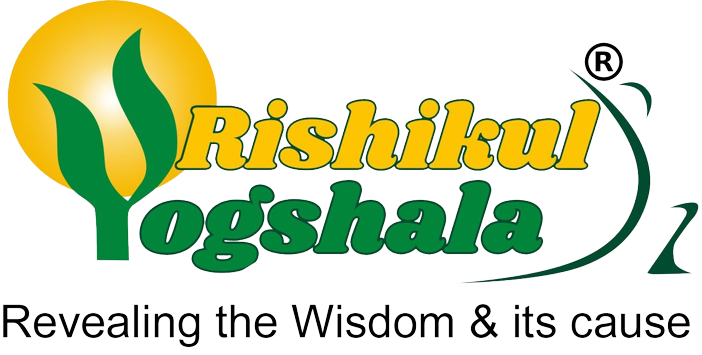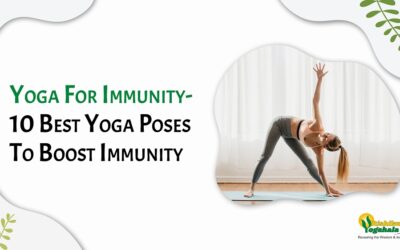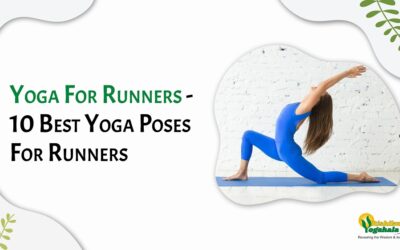If as a yoga practitioner, you wish to advance in your yogic journey, then, Plank Pose is for you. Kumbhakasana is both strengthening and balancing yoga asana fortifying the whole body, especially the core for more high-level arm-balancing yoga poses.
In addition to the benefits for the core and arms, the benefits of plank pose for internal and external body parts are diverse and miraculous. Begin the practice with us and become a recipient of the rewards.
Step-by-Step Instructions of the Posture:
- Start in Adho Mukha Svanasana (Downward-Facing Dog). In the downward dog, you are in upside-down position.
- Inhale, bring your torso forward and make it parallel to the floor. Keep drawing the torso forward until the arms are perpendicular and shoulders are over the wrists.
- Firm the palms into the floor. Spread the shoulder blades away from the spine and also widen your collarbones away from the sternum.
- Keep your legs straight behind. Toes tucked under. Lengthen the tailbone toward the heels.
- Look straight down at the floor. Do not strain the neck. Soften your gaze and throat.
Modifications and Props:
● If your arms and core are not strong enough to support your body, perform half plank pose with knees in contact with the ground.
● You can practice Adho Mukha Svanasana against a wall and slowly transition into Plank Pose.
Deepen the Pose:
● In the final pose, try lifting one leg at a time. Hold the leg up high for five breaths. Repeat the same with the other.
● Open the space between the shoulder blades and do not narrow your collar bones. This alignment instruction will prepare you for Bakasana and Sirsasana.
Tips for practicing the pose:
● Keep the body in one straight line from shoulders to heels.
● The distance between your hands and feet should remain the same in Plank Pose as it was in Downward-Facing Dog.
7 Health Benefits of Kumbhakasana:
- Strength in Wrists and Hands: For playing your favorite racket sport and performing daily activities, like opening the tight lid of a jar, you need strength and stamina in wrists. The Plank posture works on the intrinsic muscles of the wrists and hands providing them with strength and flexibility. The dorsiflexion of the wrists and applied pressure into the ground help you reap the health benefits of Kumbhakasana for wrists and hands.
- Stronger Triceps: In the Kumbhakasana, you push your arms into the ground and also use them to hold your body weight. This movement results in contraction of the triceps. Also, rotate your triceps inward as you push your arms into the floor and away from the shoulder. Each of these movements helps you build strong triceps. Stronger triceps create strong biceps. With plank pose, nurture a strong tricep-bicep relationship to counteract flabby arms.
- Lengthens Neck Muscles: For most of our life, we take neck for granted. There are 18 muscles in the neck responsible for diverse functions. Even a slight injury can cause humongous trouble. As you pull your neck to lengthen the spine, spinal group muscles, top of the trapezius are strengthened. With neck benefits of plank pose, you can hold yoga postures in a steady way as well as you can sleep better without worrying about the neck being uncomfortable.
- Conditioning Spinal Muscles: The spinal extensors are one of the muscle groups responsible for keeping the back upright and aligned. The engagement of the core (it includes the back) during the performance of plank pose contracts and strengthens those extensors. Strong extensors are really helpful in alleviating low back pain.
- Toned Hips: In the plank pose, you get a chance to work on the gluteus muscles that help in neutral hip extension, low back alignment and pelvis position. Beginners can practice modified Plank Pose for health benefits of Kumbhakasana for the lower body.
- Spiritual Rewards: As a Sun Salutation posture and the pose meaning breath retention, Kumbhakasana promotes inner strength and spiritual upliftment. When practiced on the forearms with hands in Anjali Mudra, it is believed the pose activates Ajna and Manipura Chakra. Ajna is the seat of clarity, wisdom, and self-realization while Manipura is the power center of the body.
- Preparation for Arm-Balances: Plank Pose acts as a stepping stone to advanced arm-balancing poses by strengthening your arms, wrists, shoulders, and the core. With the Kumbakasana, you can make your way towards the next series of arm-balancing yoga poses for health and wellbeing.
With so many rewards, it’s no brainer why Plank Pose is revered among yogis. Practice it to grow stronger and steadier.




